Cleopatra bobbleheads are among treasures of Egyptian kitsch
-

Assistant curators in the Egyptian section of the Penn Museum, Josef and Jennifer Wegner have acquired their own collection of all things Egypt in their West Philadelphia home. (Lindsay Lazarski/WHYY)
-
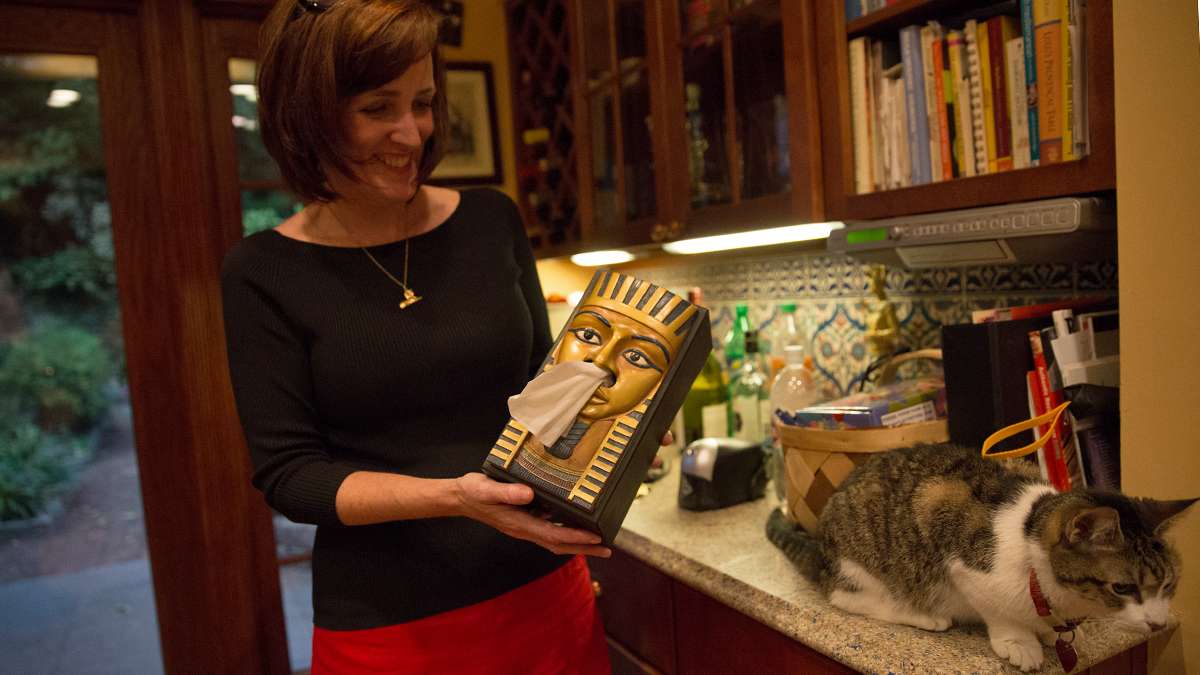
From King Tut tissue boxes to tchotchkes, the Wegners have amassed their collection from their travels to Egypt, antique stores, gifts, and Ebay. (Lindsay Lazarski/WHYY)
-
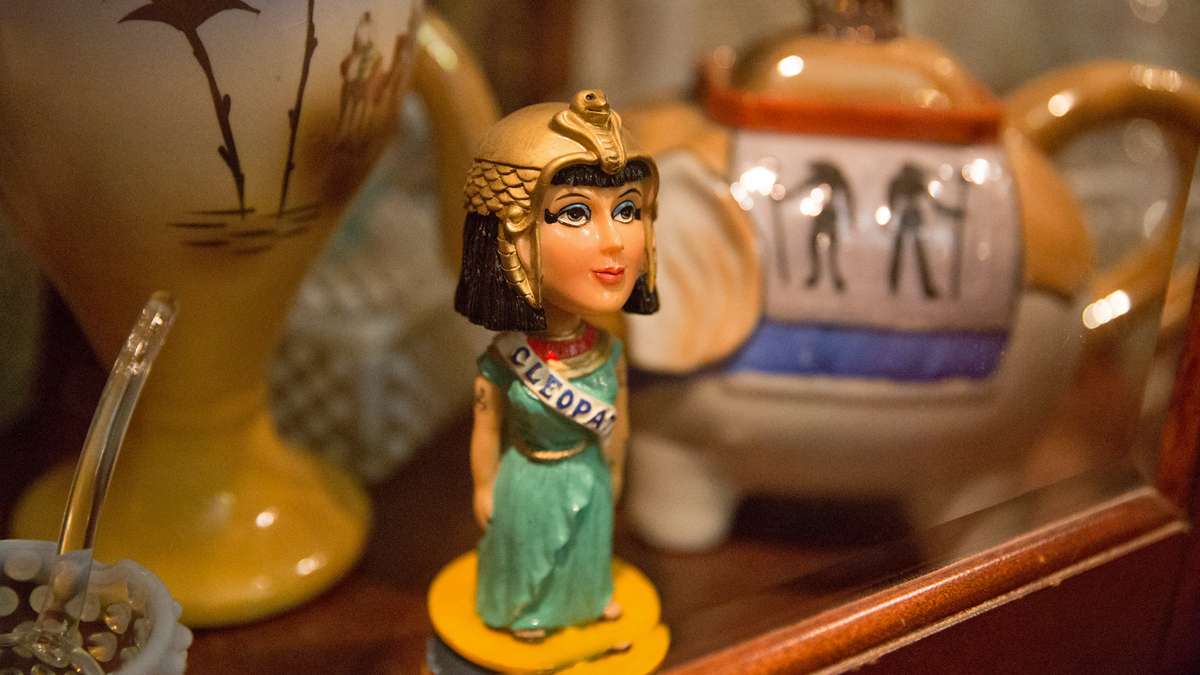
Jennifer specializes in ancient Egyptian language from the time period of Cleopatra. She also collects Cleopatra figurines including this bobble-head. (Lindsay Lazarski/WHYY)
-

Jennifer and Josef Wegner with their son, Alexander, 10. Jennifer admits that she is often the instigator of the Egyptian kitsch collection in the family. (Lindsay Lazarski/WHYY)
-
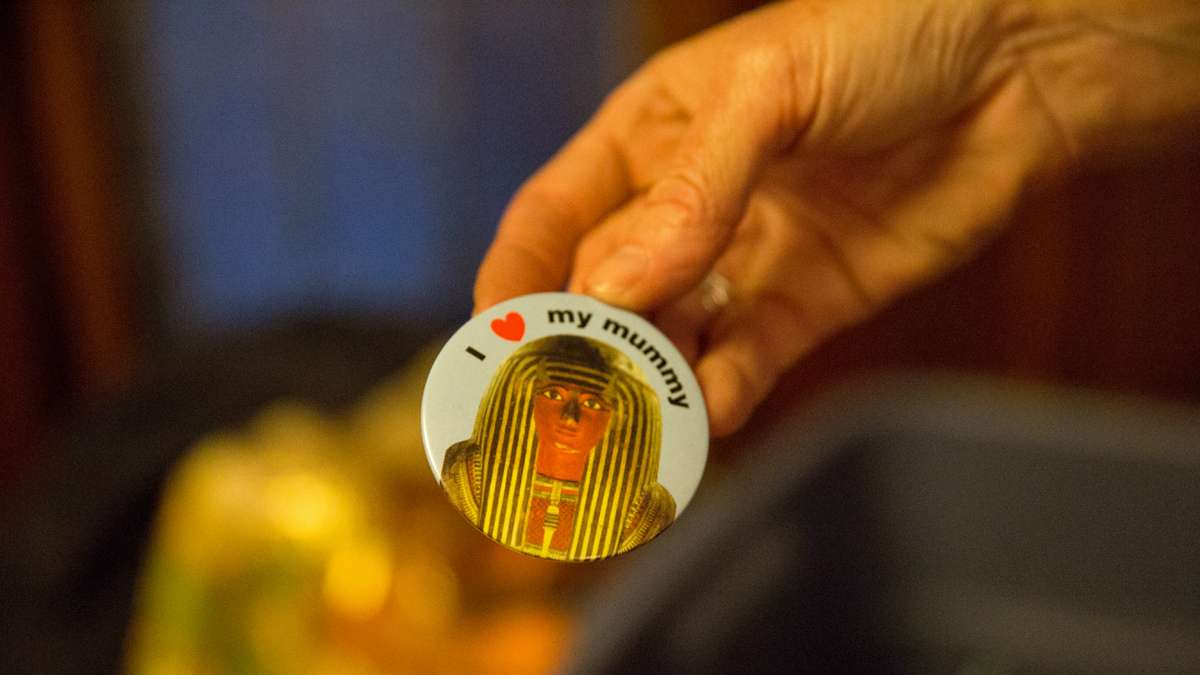
Jennifer's fascination of ancient Egypt began in 6th grade social studies class. She said she never grew out of the phase. (Lindsay Lazarski/WHYY)
-
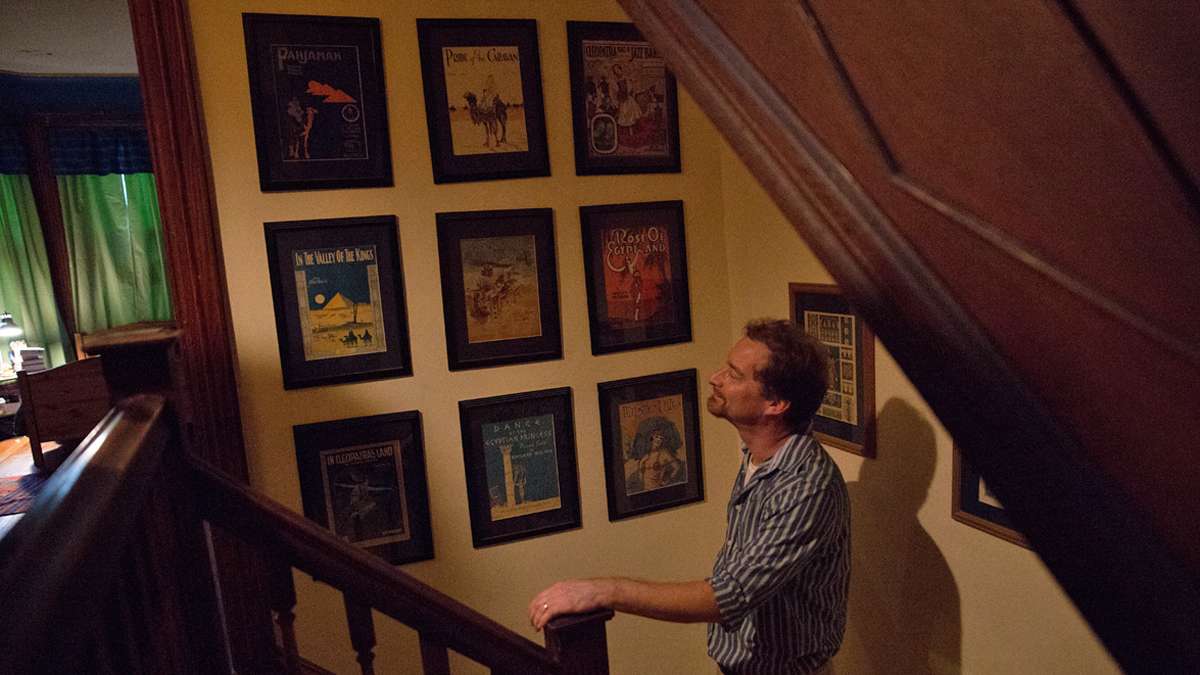
Josef Wegner walks past framed Egyptian themed sheet music. (Lindsay Lazarski/WHYY)
-
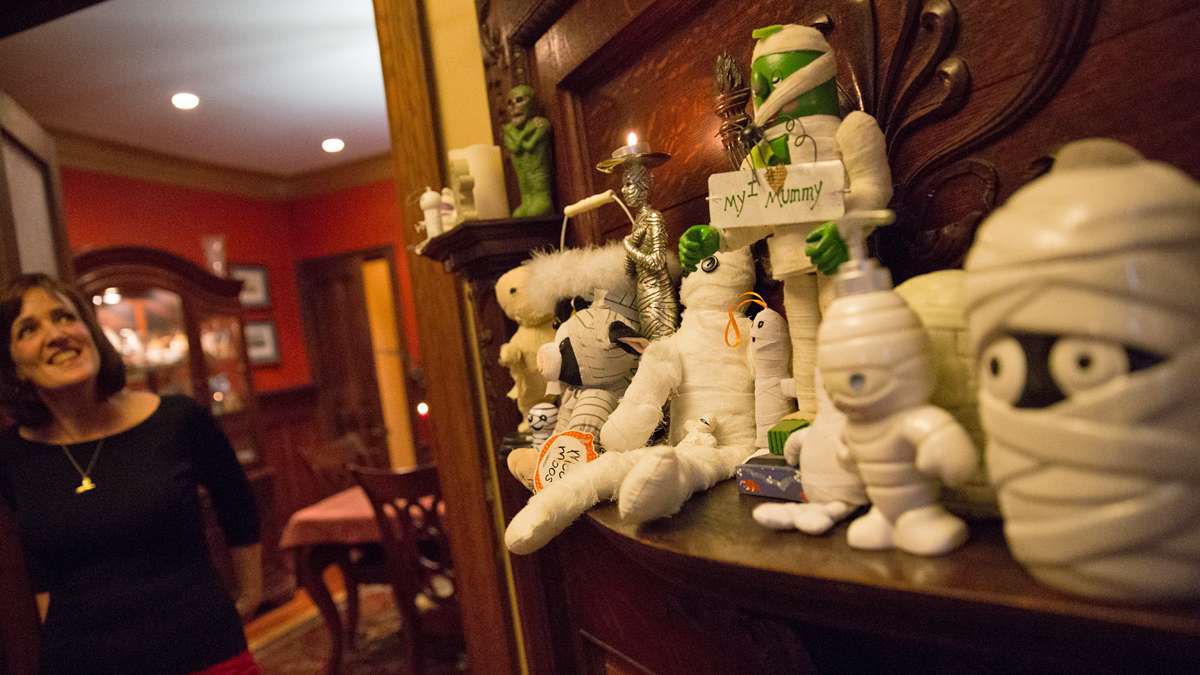
Halloween is an important holiday in the Wegner household, the display on the mantel is just a small sampling of their mummy collection, said Jennifer. (Lindsay Lazarski/WHYY)
-
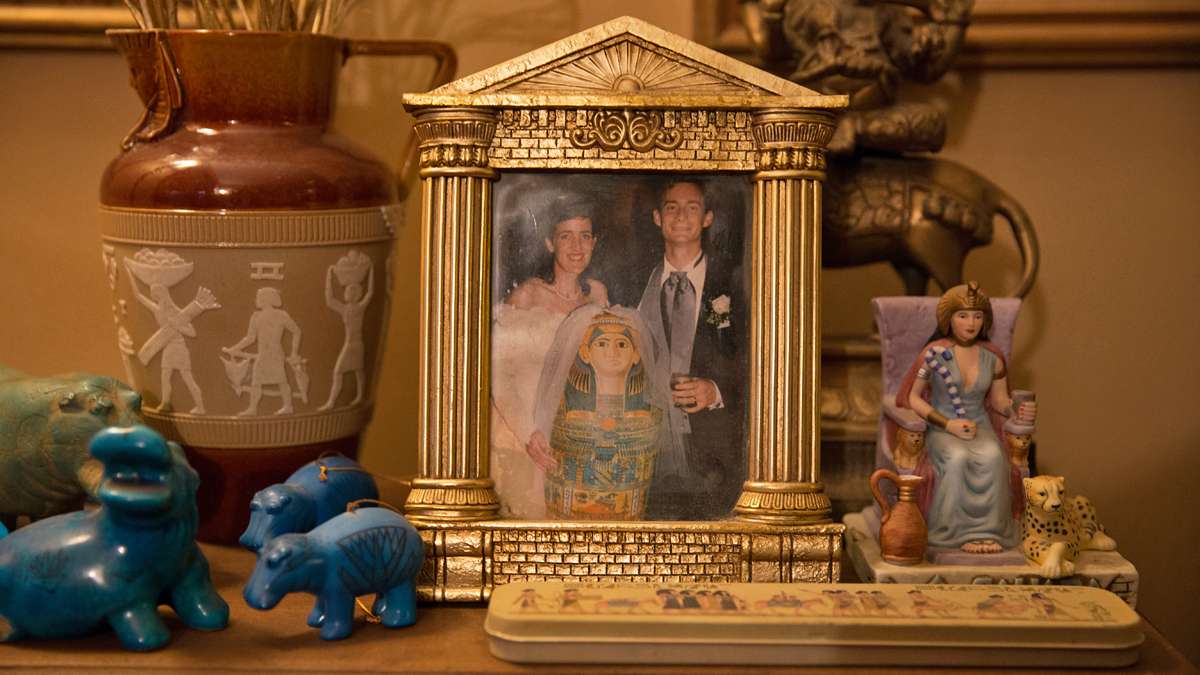
Josef and Jennifer Wegner met while studying at the University of Pennsylvania and incorporated Egypt into their wedding with a pyramid cake. (Lindsay Lazarski/WHYY)
-
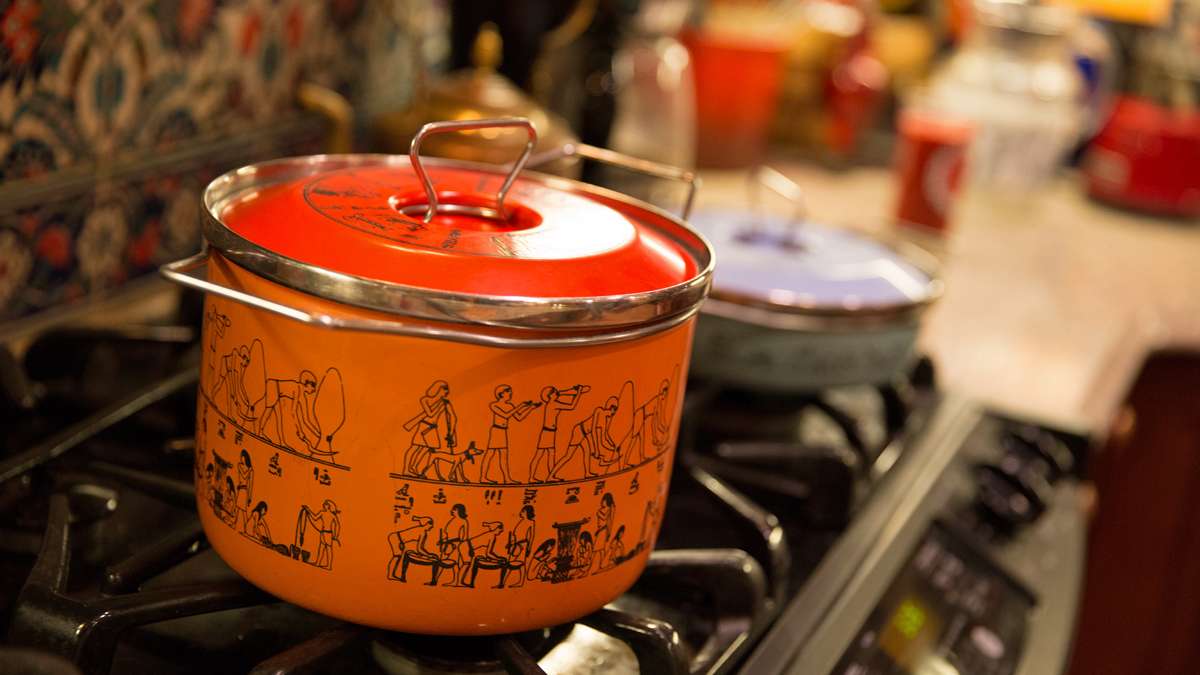
The kitchen includes Egyptian themed pots, pans and glassware (Lindsay Lazarski/WHYY)
-

Josef hand-painted a mural of the banks of the Nile with birds and lotus flowers on the bathroom wall. (Lindsay Lazarski/WHYY)
-
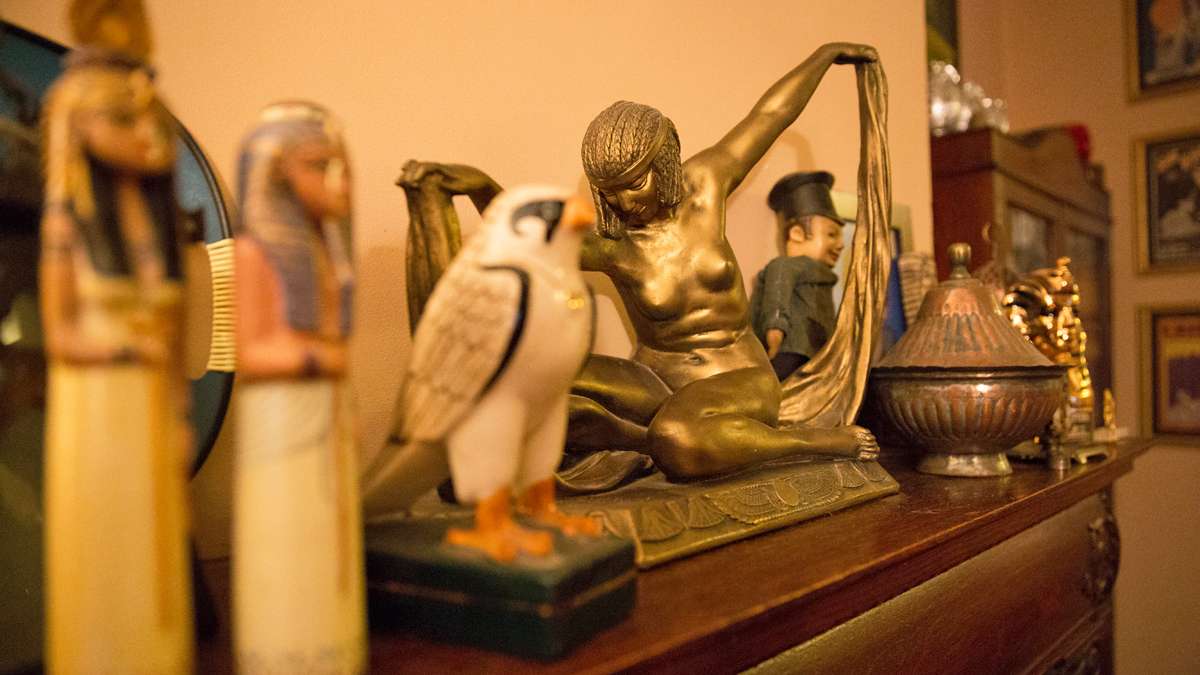
Josef found this metal statue at a flea market in New Mexico. She spoke to me, said Wegner. (Lindsay Lazarski/WHYY)
-
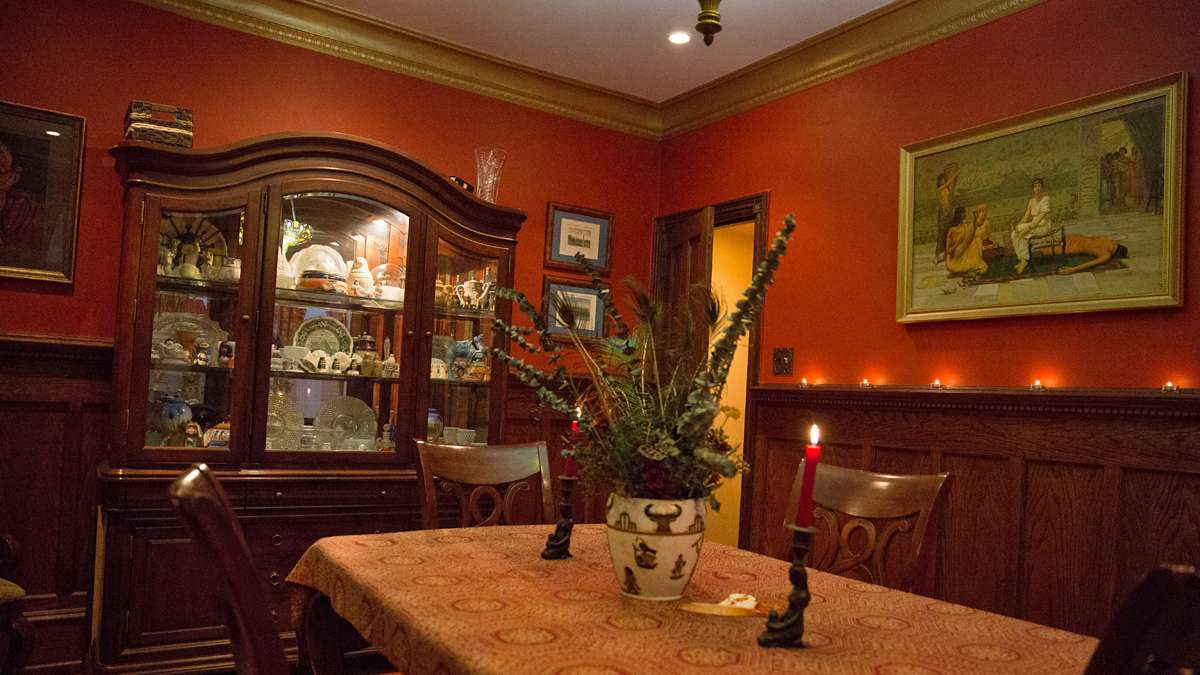
The Wagners display Egyptian art and a curio cabinet with whimsical knick-knacks in their dining room. (Lindsay Lazarski/WHYY)
-
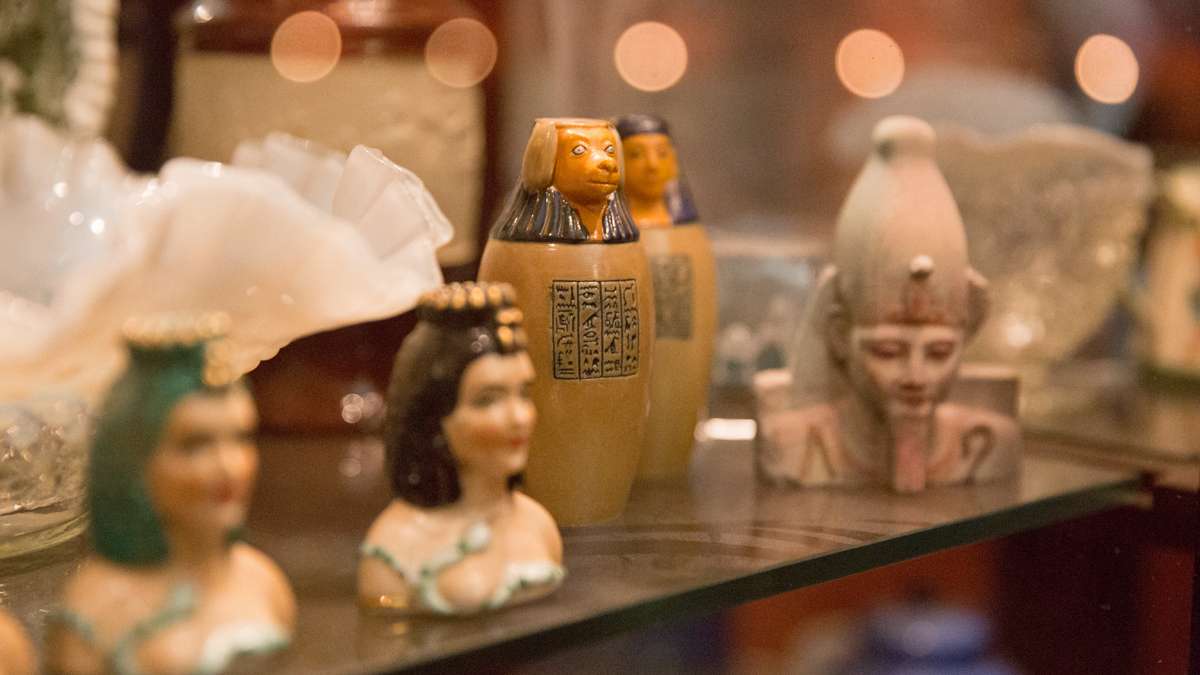
On Friday, the Penn Museum celebrates 100 years of the sphinx, a mythological creature without the body of a lion and human like head. Many of the Wegners' kitschy sphinxes will also be on display at the museum. (Lindsay Lazarski/WHYY)
This weekend the University of Pennsylvania museum launches an exhibition celebrating the 100th anniversary of the arrival of its sphinx. At about 15 tons, it is the larget sphinx in the western hemisphere.
As part of the centennial, associate curator Jen Wegner and her husband Joseph ― also an Egyptologist with the University of Pennsylvania ― are preparing a book about the sphinx, which dates back more than 3,000 years.
Jen is also preparing for Halloween.
“Halloween is a very important holiday for Egyptologists,” said Wegner in her West Philadelphia home. “It’s a high holy day for Egyptologists.”
The mantelpiece in the front room is stacked with mummies of every variety: plush mummies, soap dispenser mummies, candlestick mummies, plastic toy mummies. Wegner makes the distinction between mummy-scary and mummy-cute.
“I’m a big fan of mummy-cute,” said Wegner, grabbing a mummy cow which makes a moo-ing sound when you flip it over, and an animatronic mummy that dances to Michael Jackson’s “Thriller.”
Wegner also has curio cabinets full of Cleopatra bobbleheads, pyramid candlesticks, pharoah tissue box (the tissues are pulled out of King Tut’s nose), and camel kitsch, which she finds on eBay, in thrift stores, and receives from friends.
She says it is not unusual for serious Egyptologists to harbor a secret passion for Egyptian kitsch. It gets competitive.
“My professor at Yale is constantly looking at what we have, saying, ‘I have that. I don’t have that. Where did you get that? I’m going to get one of those,'” said Wegner.
In spite her collection, Wegner is very serious about Egypt. She specialized in late-period languages and the era of Cleopatra. Her husband ― who specialized in earlier periods ― regularly travels to Egypt for archeological digs. The two are working together on a book about the Penn Museum’s Sphinx, which is associated with a cluster of destroyed temples for the god Ptah.
The Wegners have been researching what the sphinx meant to the ancient city of Memphis, and what it has meant to the modern city of Philadelphia. The newspapers of 1913 were dominated by two stories: the Philadelphia Athletics beating the New York Giants in the World Series, and the arrival of the 15-ton Sphinx.
“There was a lot of excitement when it came,” said Jospeh. “Reporters must have swamped the docks when it arrived, because there were reports of this big sphinx wrapped in burlap, and the trouble they had getting it off because there wasn’t a crane big enough.”
Since the sphinx was put into place 100 years ago (it has not budged since) it has been the focal point of the Penn Museum. “Every school group sees it and takes picture of themselves with it. The sphinx has been the backdrop of weddings, funerals even, and lecture and dinners,” said Jen. “It has always been there, but I think people don’t know much about its story.” The book is expected to be published early next year.
As for the more ephemeral Egyptian kitsch decorating the couple’s home, Jospeh says it is mostly his wife’s collection. Jen points to a their wedding photo in the living room, in which husband and wife posed with an inflatable King Tut sarcophagus.
“I did not dress up as Cleopatra at my wedding,” said Jen. “I wore a regular bride gown.”
But did she want to? “I did. It’s true.”
WHYY is your source for fact-based, in-depth journalism and information. As a nonprofit organization, we rely on financial support from readers like you. Please give today.





